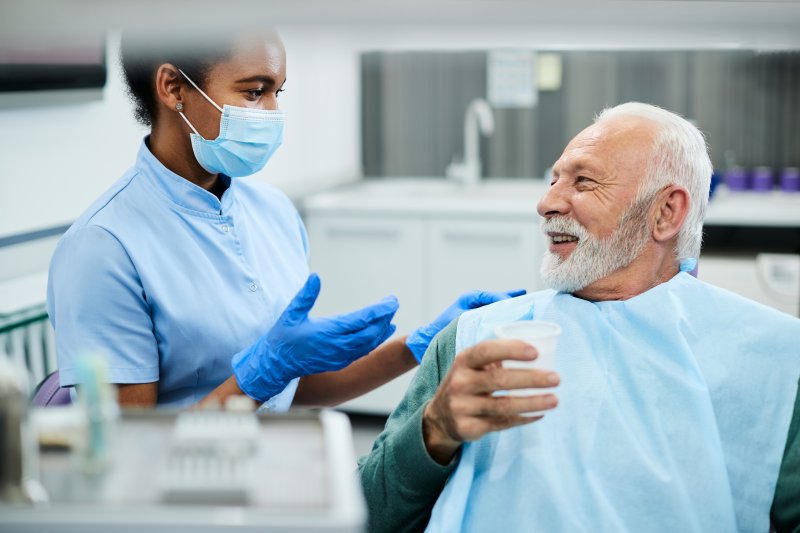
Gum disease affects more than 50% of Americans, making it highly prevalent in oral health. It’s a leading cause of tooth loss and has links to serious health issues like stroke, diabetes, respiratory infections, and heart disease. Early detection allows for effective treatment and symptom reversal. Keep reading to learn about the stages that can be cured and those that may cause irreversible damage.
Symptoms of Gingivitis
When sugars and starches in our food mix with oral bacteria, they create plaque on teeth and along the gumline. If left unchecked, this can lead to bacteria attacking gum tissue and causing an infection called gingivitis, the initial stage of gum disease. Gingivitis is treatable, making it crucial to watch out for these three signs:
- Gums that bleed easily, especially when you floss or brush
- Puffy, red, or inflamed gums
- Chronic bad breath
Treatments for Gingivitis
If better oral care doesn’t ease symptoms, your dentist will provide periodontal therapy. This often involves scaling and root planing, where bacteria below your gums are cleaned to remove infection. Teeth roots are then smoothed to prevent future problems and help gum tissue reattach.
Symptoms of Periodontitis
If left untreated, gingivitis can advance to periodontitis. At this stage, bacteria begin attacking the jawbone, leading to permanent damage and symptoms such as:
- Gums recession, forming deep pockets in front of the teeth
- Swelling, soreness, and gum discharge
- Loose teeth that may fall out
Treatments for Periodontitis
Scaling and root planing, also called a deep cleaning, is the preferred nonsurgical procedure for moderate gum disease. Your dentist or hygienist uses special tools to clean above and below the gum line, removing bacteria through scaling and smoothing the roots to prevent reinfection with planing. This treatment may take multiple visits.
In advanced stages of gum disease, nonsurgical options are limited. Traditional gum surgery is intricate and involves lengthy recovery times. However, soft tissue lasers provide scalpel-free and suture-free care. Using Biolase technology ensures precise treatment, targeting bacteria while preserving healthy tissue for optimal outcomes. This approach is more comfortable, enhances healing, and reduces the risk of future infections.
The bacteria causing gum disease can multiply quickly in the mouth, sometimes outpacing treatment for moderate or advanced stages. Antibiotic therapy is used to combat reinfection and enhance the effectiveness of gum disease treatment. Your dentist may apply antibiotics directly to the infection or prescribe oral antibiotics, often preferring ARESTIN for gum disease therapy depending on your needs.
Tips for Preventing Gum Disease
The most effective way to prevent gum disease is by following these steps:
- Rinsing with an antiseptic mouthwash daily
- Cutting back sweets
- Getting checkups twice a year
- Brushing for two minutes twice a day
- Flossing once per day
- Eating a nutritious diet high in vitamin C
If you experience signs of gum disease, promptly visit your dentist. Early detection and proper treatment can safeguard your gums and ensure a healthy, vibrant smile.
About the Practice
Receive compassionate and attentive dental care at Ponte Vedra Complete Dentistry, led by Dr. Kristopher R. Harth and Dr. Eric L. Townsend. Our dedicated team offers comprehensive oral health solutions for families, specializing in restorative treatments to rejuvenate your smile. We emphasize early detection and effective treatment of gum disease to restore your oral health. Schedule an appointment with Ponte Vedra Complete Dentistry or learn more about gum disease prevention by visiting our website or calling us at (904) 285-7711.



